A major solar flare measuring X1.0 erupted from Active Region 3664 at 05:09 UTC on May 8, 2024. The event started at 04:37 and ended at 05:32 UTC. This is the second X-class solar flare of the day, following another X1.0 at 01:41 UTC.
A Type II Radio Emission with an estimated velocity of 1 152 km/s was registered at 05:01 UTC, suggesting a coronal mass ejection (CME) was produced.
A Type IV Radio Emission was registered at 05:08 UTC. These emissions occur in association with major eruptions on the Sun and are typically associated with strong CMEs and solar radiation storms.
Additionally, a 10cm Radio Burst (tenflare) lasting 22 minutes and with a peak flux of 570 sfu was associated with this event. This indicates that the electromagnetic burst associated with a solar flare at the 10cm wavelength was double or greater than the initial 10cm radio background. This can be indicative of significant radio noise in association with a solar flare. The noise is generally short-lived but can cause interference for sensitive receivers including radar, GPS, and satellite communications.
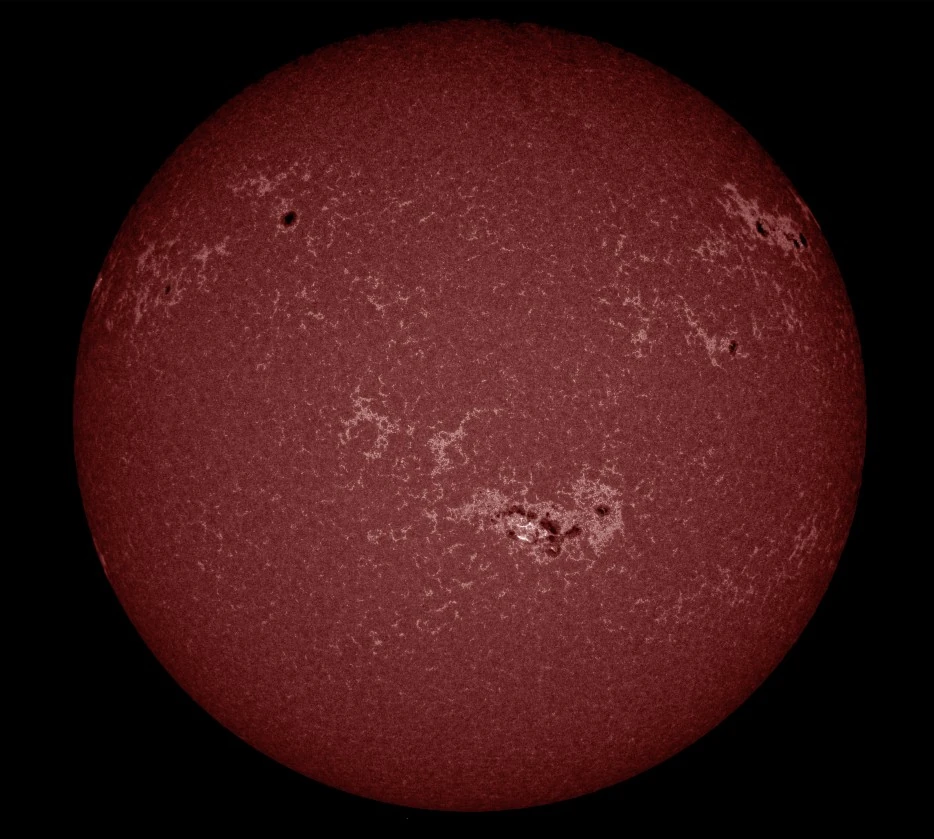
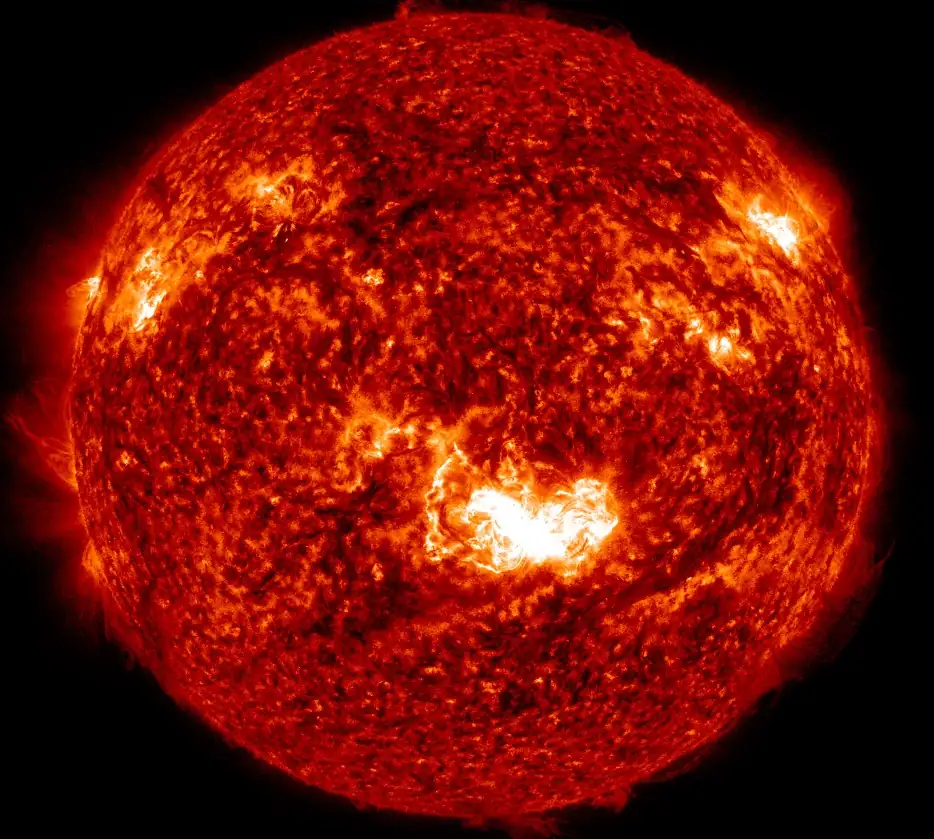

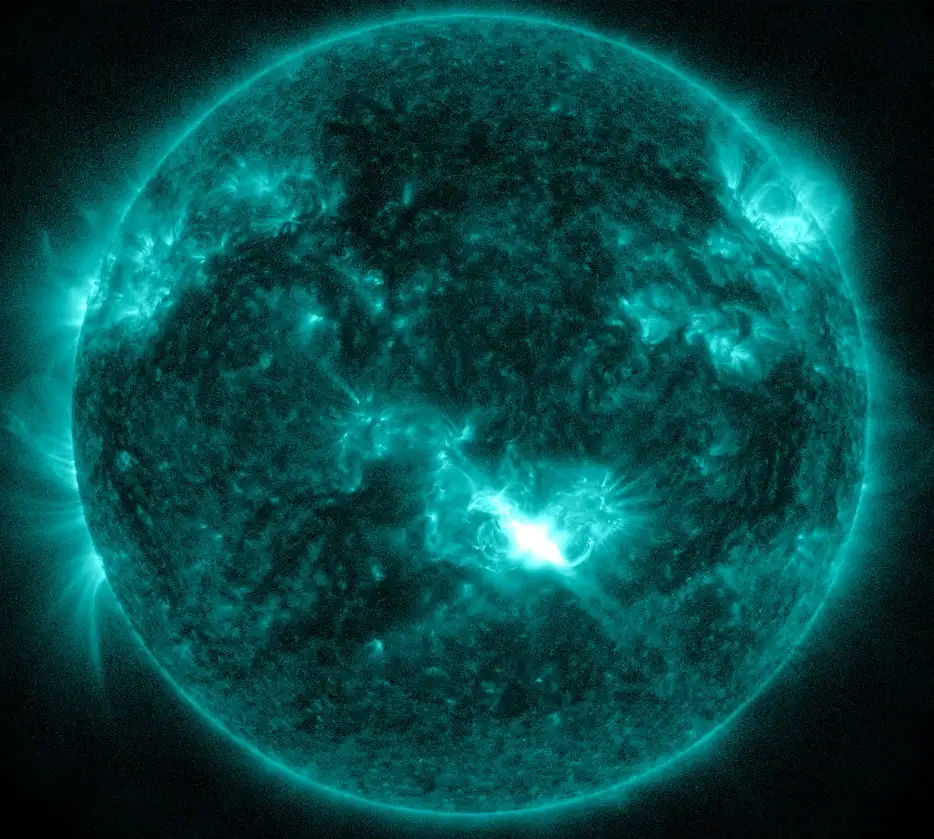

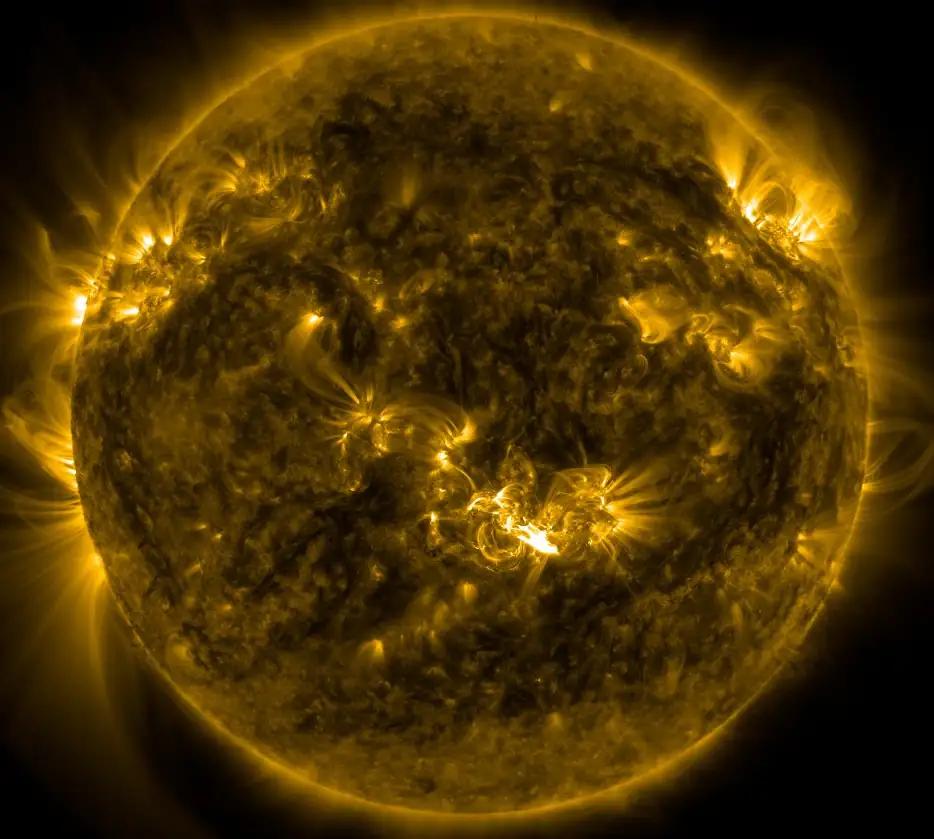

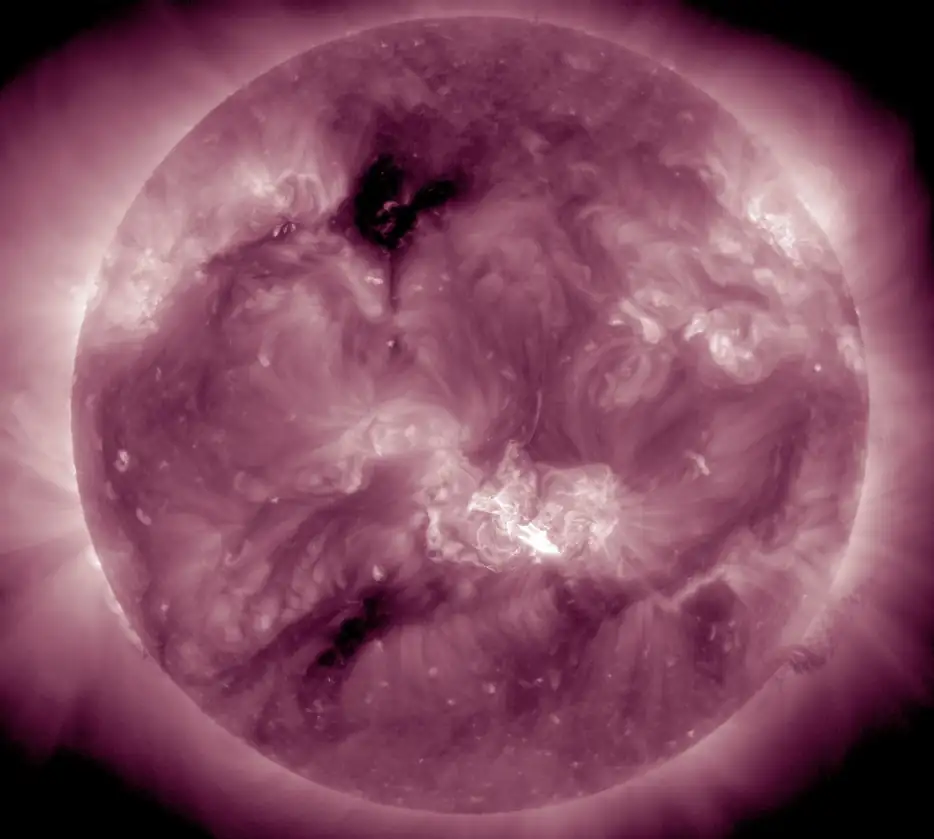

Radio frequencies were forecast to be most degraded over Asia, the Indian Ocean, parts of Australia, and West Pacific Ocean at the time of the flare.
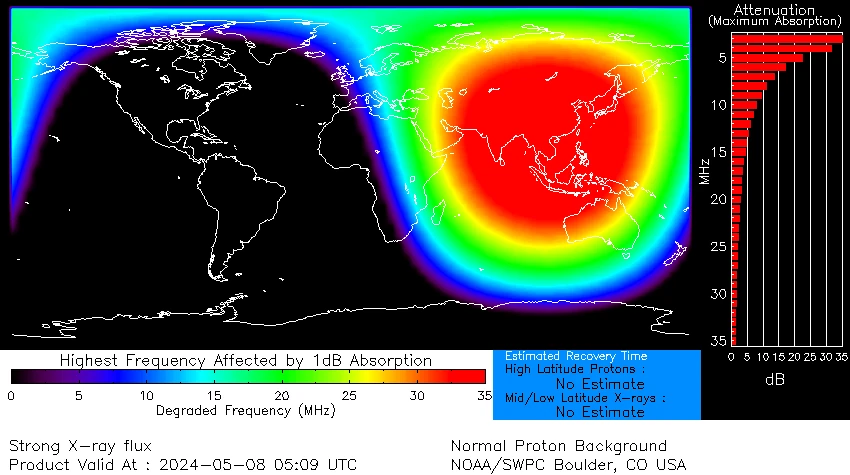

Region 3664 is currently in a geoeffective position — favoring Earth-directed CMEs.
Additionally, it has a ‘beta-gamma-delta’ magnetic configuration and is capable of producing more strong to major eruptions on the Sun. Any CME produced by this region over the next few days has a good chance of being Earth-directed.


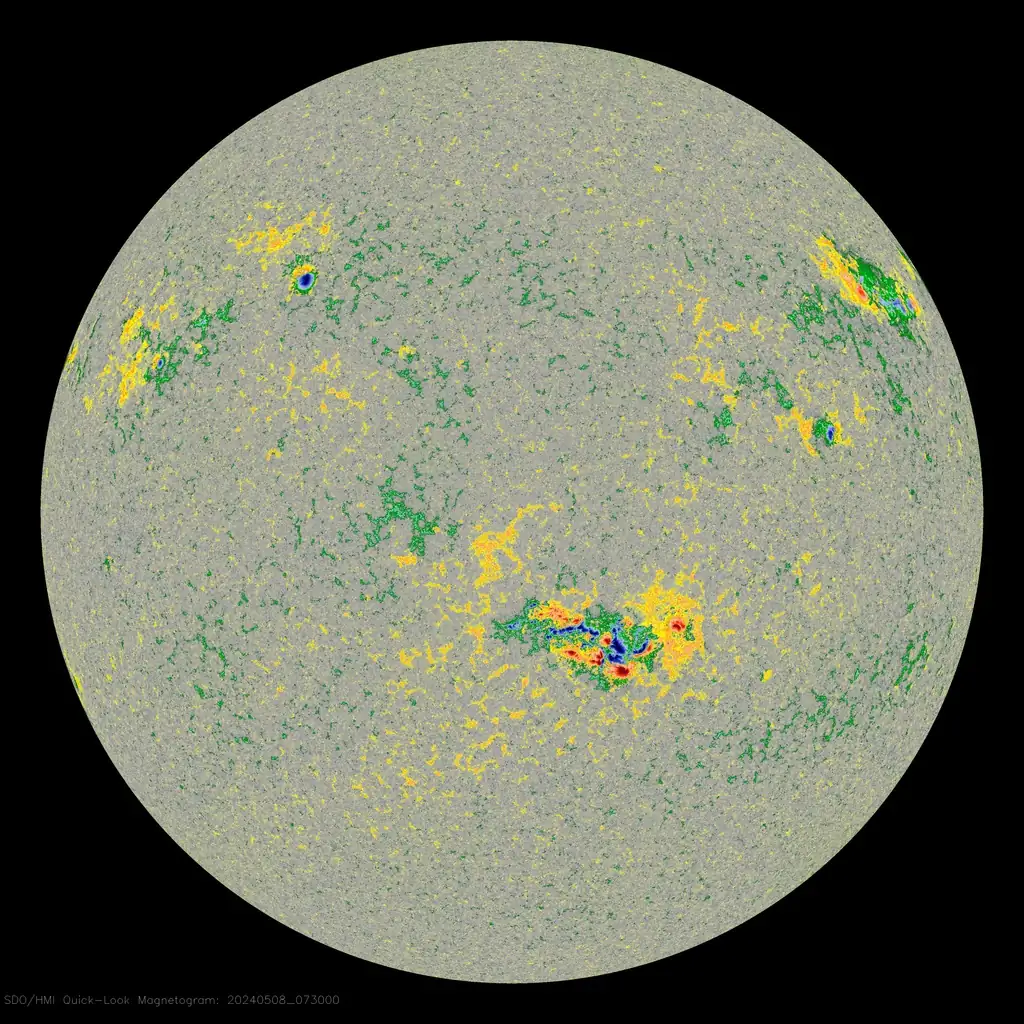

The CME is visible in LASCO C2 and C3 coronagraph imagery.
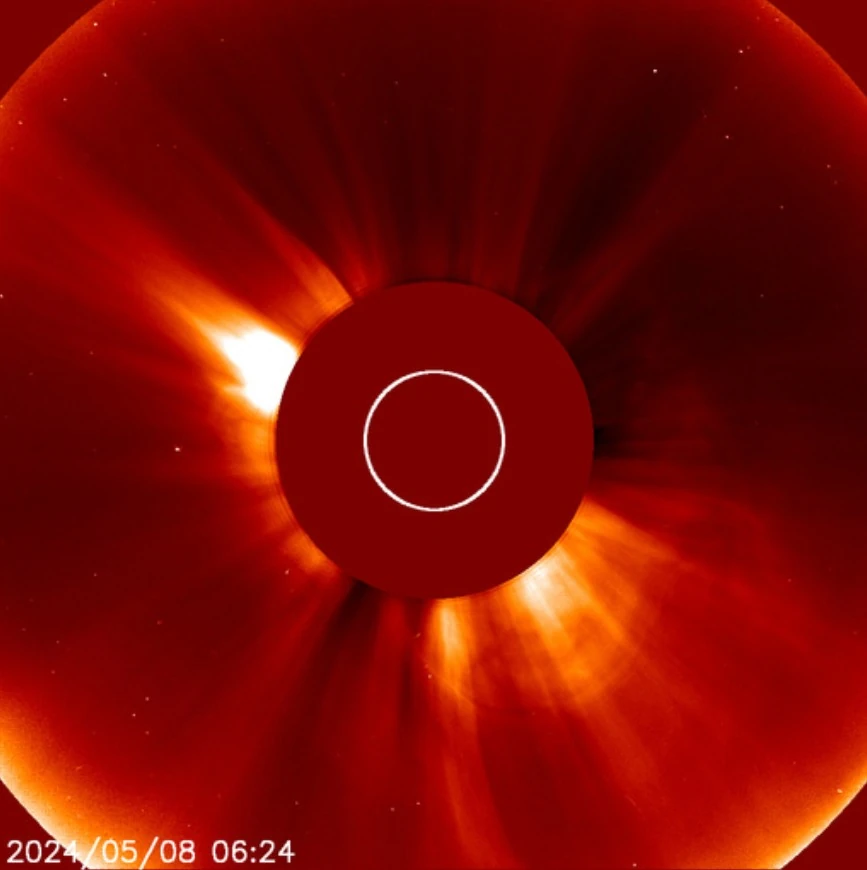



This was the second X-class solar flare of the UTC day, following an impulsive X1.0 at 01:39 UTC from Region 3663 — now located near the NW limb. CME was not produced by this event.
In 7 days to 08:00 UTC on May 8, our star produced 44 M-class and 6 X-class solar flares, most of them by regions 3663 and 3664.
The strongest CMEs produced by this activity were directed away from Earth.
It’s possible that a part of the CME produced on May 6 is heading our way. However, only a glancing blow is anticipated, causing unsettled to active geomagnetic field conditions on May 9.
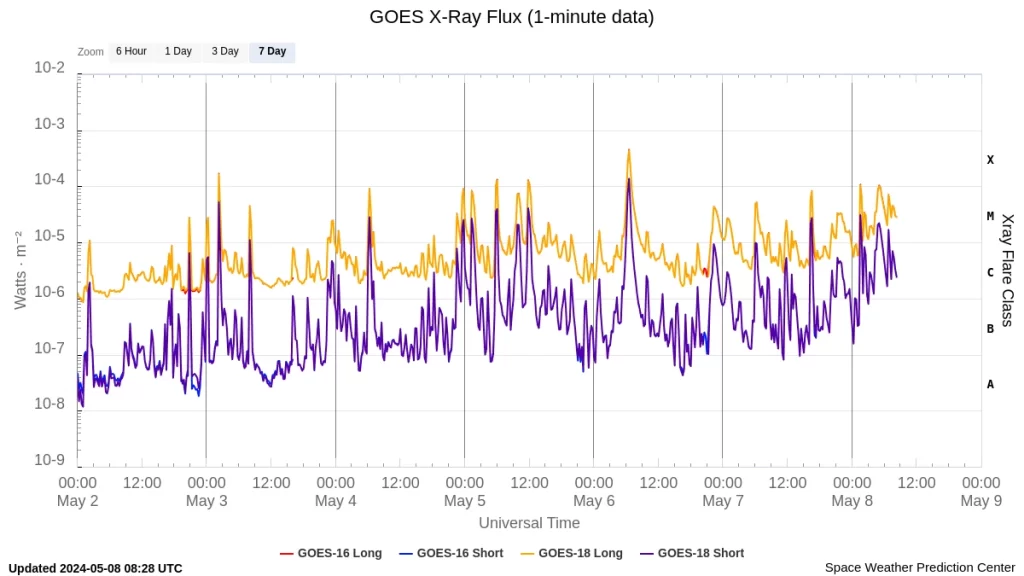

| Max class | Time (UTC) |
|---|---|
| M4.5 | 05/8, 07:41 |
| M7.1 | 05/8, 06:53 |
| X1.0 | 05/8, 05:09 |
| M3.5 | 05/8, 04:30 |
| M1.9 | 05/8, 03:42 |
| M1.8 | 05/8, 03:27 |
| M3.4 | 05/8, 02:27 |
| X1.0 | 05/8, 01:41 |
| M8.2 | 05/7, 16:30 |
| M1.0 | 05/7, 13:35 |
| M1.0 | 05/7, 13:25 |
| M1.5 | 05/7, 12:54 |
| M2.4 | 05/7, 11:50 |
| M1.3 | 05/7, 08:23 |
| M5.1 | 05/7, 06:16 |
| M2.6 | 05/7, 00:58 |
| M4.3 | 05/6, 22:27 |
| M1.2 | 05/6, 21:48 |
| M1.5 | 05/6, 09:59 |
| X4.5 | 05/6, 06:35 |
| M1.3 | 05/6, 05:28 |
| M1.6 | 05/6, 01:06 |
| M1.3 | 05/5, 19:52 |
| M1.0 | 05/5, 18:40 |
| M1.3 | 05/5, 17:01 |
| M2.2 | 05/5, 15:38 |
| M1.3 | 05/5, 14:47 |
| X1.2 | 05/5, 11:54 |
| M7.4 | 05/5, 10:00 |
| M2.3 | 05/5, 09:38 |
| M1.3 | 05/5, 08:19 |
| X1.3 | 05/5, 06:01 |
| M8.4 | 05/5, 01:27 |
| M9.0 | 05/4, 23:48 |
| M3.2 | 05/4, 22:37 |
| M1.3 | 05/4, 18:20 |
| M1.5 | 05/4, 07:07 |
| M9.1 | 05/4, 06:19 |
| M1.6 | 05/4, 00:36 |
| M2.4 | 05/3, 23:30 |
| M1.0 | 05/3, 23:16 |
| M1.2 | 05/3, 22:47 |
| M4.4 | 05/3, 08:11 |
| X1.6 | 05/3, 02:22 |
| M2.7 | 05/3, 00:15 |
| M2.7 | 05/2, 20:57 |
| M1.0 | 05/2, 02:17 |
| M1.8 | 05/1, 22:31 |
| M1.9 | 05/1, 14:44 |
| M1.8 | 05/1, 14:32 |
Solar activity is expected to persist at moderate to high levels through at least May 10, with M-class flares (R1 – Minor to R2 – Moderate) expected (90%) and a high chance for X-class flares (R3 – Strong / 25%), due to the continued flare potential of Regions 3663 and 3664.
Analysis of today’s CME-producing X1.0 flare is still in progress. This report will be updated accordingly.
Featured image credit: X1.0 solar flare at 05:09 UTC on May 8, 2024. Credit: NASA SDO/AIA 304, Helioviewer, The Watchers
Large tornado rips through Barnsdall, Oklahoma, causing massive damage, gas leaks and casualties
Tuesday, May 7, 2024
Historic floods hit Porto Alegre, Rio Grande do Sul, Brazil
Monday, May 6, 2024
Major X4.5 solar flare erupts from Region 3663 — fourth X-class flare in 3 days
Monday, May 6, 2024
Major X1.2 solar flare erupts from Region 3663 — second X-class flare of the day
Sunday, May 5, 2024
Major X1.3 solar flare erupts from Region 3663
Sunday, May 5, 2024
M9.1 solar flare erupts from geoeffective Region 3663
Saturday, May 4, 2024
Major flooding and mandatory evacuations in southeast Texas
Friday, May 3, 2024